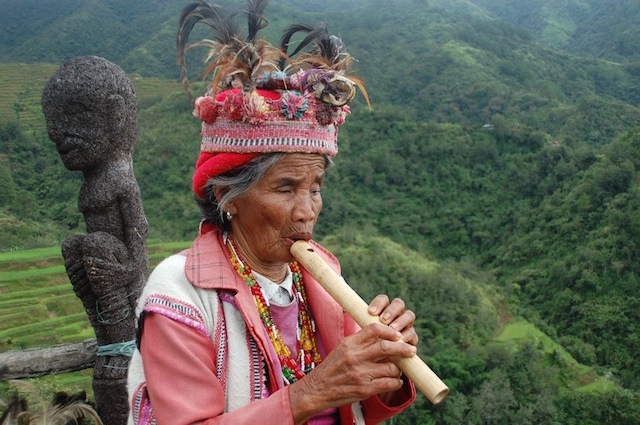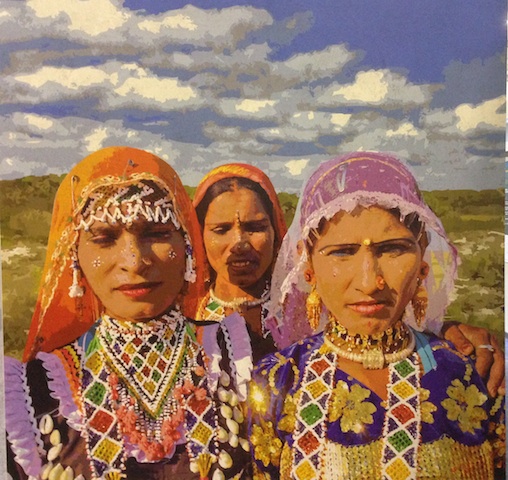Earth Day Special –
By Imelda V. Abano
For thousands of years, indigenous communities view themselves as caretakers of Mother Earth. For them, the earth and all living things in it are sacred. Their relationship with their environment, from their way of living to farming practices and religious rituals, are celebrated everyday.
——
Datu Roger Alaki, a local indigenous leader from sitio Mintakei in Agusan del Sur in Mindanao was known for his strong stand in defending their rights and land against a big mining company. He and his community face continuous repression and intimidation from a paramilitary group. In August 2014, with the rising resistance from the indigenous community, Alaki was allegedly shot dead, and the entire community fled their homes in fear.
Alaki’s death is a prime example of the price that indigenous peoples in some of the world’s remote areas are paying as they fight to defend their rights and communities from exploitation and industrialization.
This case was one of 9 activist killings in the Philippines related to mining projects in 2014, accounting for almost a third of the 25 deaths worldwide linked to extractive industries. This continues a pattern of Philippines defenders being targeted for their opposition to the country’s mining industry – a sector that operates with very little transparency and regularly fails to consult local communities. This analysis was reported on Monday by the London-based Global Witness, a group investigating conflict and corruption, and associated environmental human rights abuses.
According to the report entitled, “How Many More?”, killings of people protecting rights to land and the environment have increased dramatically in recent years as competition over natural resources intensifies. Killings of land and environmental activists in 2014 reached an average of more than two a week, with 116 known deaths worldwide – almost double the number of journalists killed in the same period and an increase of 20% from the previous year. From 2002 to 2014, the Global Witness documented 908 killings.
At least 47, indigenous people were killed defending their natural resources, accounting to 40 percent of the total deaths of environmental and land defenders.
In Asia, the Philippines is the leading country with the highest number of people killed with 15. While Brazil had the highest number of environmental activist murders in 2014, the most dangerous place to be an environmental activist was actually Honduras, according to Global Witness. During the last five years (2010-2014), Honduras lost 101 activists, giving it the highest rate of environmental activist killings per capita.
“ The Philippines was again the most dangerous place in Asia to be an environmental activist with 15 deaths. Around 9 of these were indigenous peoples. Many of the killings in the Philippines took place in the context of opposition to mining projects,” Billy Kyte, campaigner at Global Witness said. “Paramilitary groups were the suspected perpetrators in many of the deaths. The legacy of wider armed conflicts continued to endanger the lives of land defenders and limit their protection by the state.”
The report said that extractive companies are encroaching more and more on indigenous people’s land as the demand for resources pushes their operations into remote, frontier areas. This is causing clashes as legitimate customary rights to land are being ignored.
“ These killings will continue until governments and companies recognise and implement the right of communities to genuinely free, prior and informed consent on extractive projects,” the report further said.
More and more people are being killed protecting rights to land and the environment, Kyte said. “This is happening because soaring demand for resources is cranking up pressure on the environment, and on the people most reliant on it. It’s going unnoticed, and largely unpunished, because governments are failing to protect their citizens from harm.”
There is very little publicly available information to confirm suspected perpetrators, but in cases that are well documented we found 10 were related to paramilitary groups, 8 to the police, 5 to private security guards and 3 to the military, the report said.
The report said governments and the international community must do far more to stop the rising wave of killings and threats against environmental and land defenders.
“Governments themselves have to take responsibility and ensure impartial, exhaustive investigations into killings of these activists. And they have to bring perpetrators to account. Many targeted assassinations of activists are being passed off as ‘common’ murders and are going unnoticed. Civil society has an important role to play here. Often, it is only through their pressure that emblematic cases are looked into by governments. We need to ensure that civil society organizations in-country and internationally have the capacity to monitor these deaths, raise awareness and seek justice for the victims,” Kyte explained.
End killings of indigenous peoples
In the Philippines evidences show that many of the remaining forests and biodiversity hotspots are in indigenous peoples’ ancestral territories, said Victoria Tauli-Corpuz, UN Special Rapporteur on the Rights of Indigenous Peoples.
“ One factor why this is so is because indigenous peoples protect and defend their territories from environmental destruction caused by corporate and state programs which pose high social and environmental risks,” Corpuz said. “ The use of paramilitary groups by corporations and the State to quell resistance against destructive projects should be stopped and the provisions of the Indigenous Peoples’ Rights Act in relation to the need to obtain the free, prior and informed consent of indigenous peoples should be effectively implemented.”
Tauli cited that the Government of the Philippines is a signatory to almost all international human rights conventions and adopted the UN Declaration on the Rights of Indigenous Peoples, “yet extrajudicial killings of indigenous leaders and activists persist.”
“ I urge the government to address these human rights violations and uphold its obligations to International Human Rights Law. Its reputation of being one of the most dangerous places for environmentalists and also for indigenous activists is a source of shame not only for the country but for its citizens. The State should seriously address many of the unsolved killings and bring the perpetrators to justice.”
In December this year, the world will turn its attention to the most significant international meeting on climate change in years – the UN climate conference in Paris – where governments will try to reach a binding global agreement to cut greenhouse gas emissions. Environmental and land defenders are often on the frontlines of efforts to address the climate crisis and are critical to success.
“ Indigenous peoples will have to think about how to get the governments in our countries to do much more in terms of more meaningful and effective policies and programs to support the efforts of their citizens to adapt to the adverse impacts of climate change,” Corpuz said.
She said the capacities of indigenous peoples to adapt to climate change can be enhanced further if their rights to manage, control and own their lands, territories and resources, are recognized and respected.
“ Since indigenous people are contributing significantly to climate change mitigation by living simply, further developing and practicing their traditional knowledge systems and by conserving and sustainably using their forests, agricultural lands, coastal resources, among others,” Corpuz stressed. “Their rights to continue doing these mitigation measures should be respected and protected.”
According to Kyte, the Global Witness report aims to put pressure on governments and companies “to clean up their act.”
“ By exposing what’s driving violence and intimidation against environmental defenders, Global Witness hopes to help usher in the kind of reforms needed to prevent further attacks. The world is standing idle whilst people on the frontline of the struggle to protect the environment are getting killed. The time for action on these killings is now,” the report said.
story and photos by Imelda V. Abano



